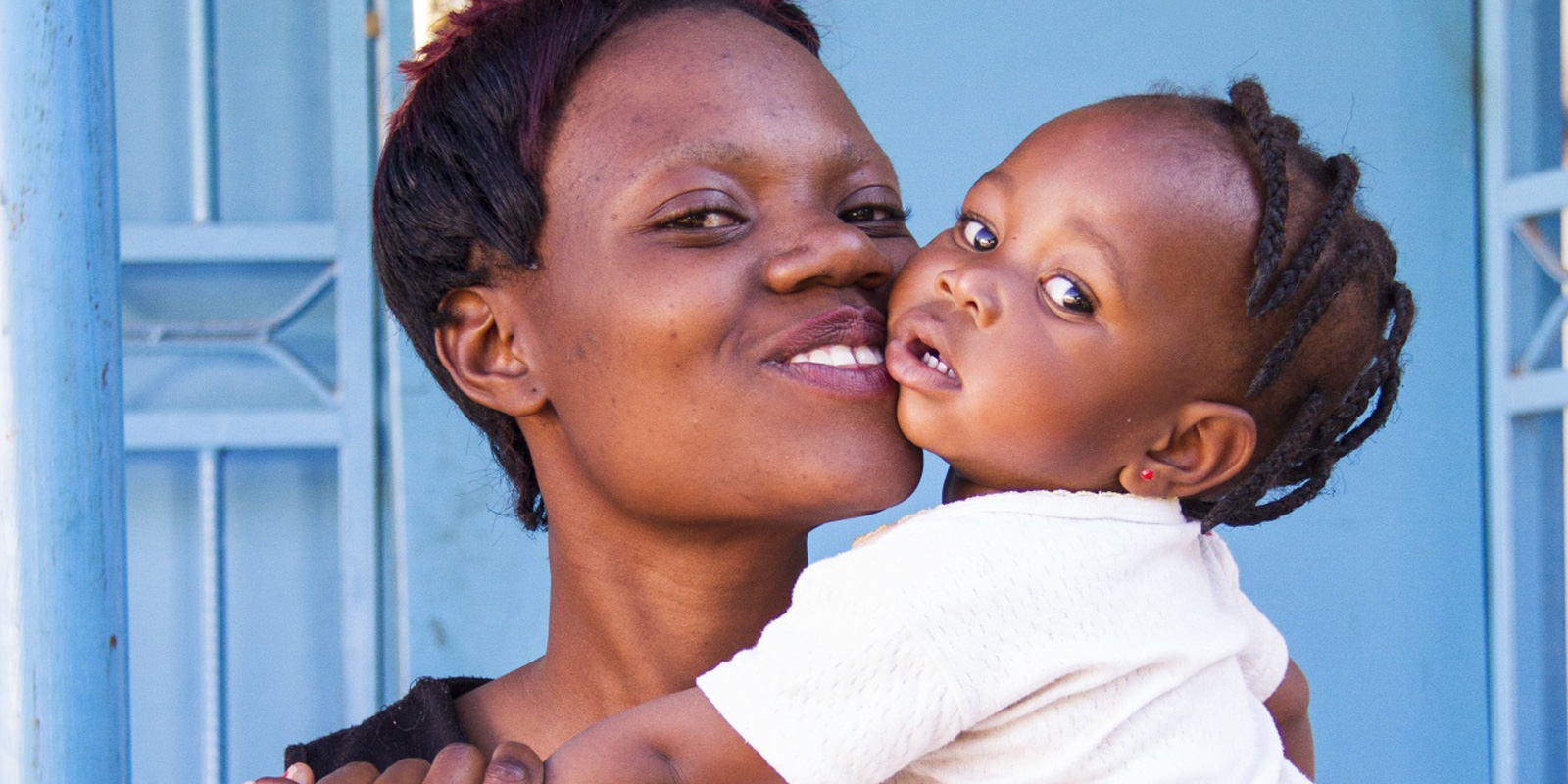The U.S. has the highest maternal and infant mortality rates among any comparable developed countries. In 2017, it ranked 55th internationally on infant mortality, a rate comparable to that of Serbia, despite spending nearly 20 times more per capita on health care. And despite having the world’s largest economy—the US gross domestic product constitutes one-fourth of the entire world’s economy—its defense spending of $649 billion outstrips the next seven major economies combined.
With CAP’s interactive tool, users can explore the infant mortality rate and the percentage of babies born at low birth rate by race, ethnicity and state to see where and for whom the infant health crisis is most severe.
The Center for American Progress (CAP) reports that African American mothers are twice as likely to have an infant who dies by the baby’s first birthday, and are twice as likely to experience life-threatening pregnancy-related complications known as severe maternal morbidity (SMM), compared with non-Hispanic white women. Although other women of color—notably American Indian, Alaska Native and some Latina communities—also experience an appalling increased risk of poor outcomes, data show that racial disparities between black women and non-Hispanic white women are the most glaring.

In the U.S., a pregnant woman’s health, her baby’s ability to thrive, survive and even her own chance at life, depend to large degree on her race and geography, says Dr. Cristina Novoa, senior policy analyst for Early Childhood Policy at CAP. An interactive report CAP released late last year analyzed vast racial disparities state-by-state in infant health outcomes throughout the nation in both infant mortality and low weight birth.
“As more research has come out over the years, one thing becoming increasingly evident is that these disparities in maternal and infant mortality are mostly rooted in racism,” says Novoa, who authored the issue brief for the report. “The reason we can say this is that, even when you control for social-economic status, education or access to resources, all those factors, we still see that black women and infants have worse health outcomes on average.” Racism—not race itself—and the systemic barriers fueled by both explicit and implicit bias are the drivers of these outcomes, she says. Structural racism compromises health.
In CAP’s state-by-state analysis, geographic disparities are stark; racial disparities are starker. For example, white babies born in New Jersey die at a rate of 3.4 deaths per 1,000 births, which is comparable to Germany’s infant mortality rate. But black babies born in Wisconsin are dying at nearly five times this rate: 15 deaths per 1,000 births—a rate higher than that of Syria. With CAP’s interactive tool, users can explore the infant mortality rate and the percentage of babies born at low birth rate by race, ethnicity and state to see where and for whom the infant health crisis is most severe. Available data show estimates for five demographic groups: white, black or African American, Hispanic, Asian or Pacific Islander, and American Indian or Alaska Native, and users can compare two groups to see how outcomes differ by race and ethnicity across states, except in some states where the sample sizes were too small to yield precise estimates.
What Birth Weight Really Measures
A baby’s weight at birth is a major determinant of their chance at surviving and thriving in life. Low birthweight is defined as when a baby is born weighing less than 5 pounds 8 ounces; babies are considered premature if they are born before 37 weeks’ gestation. Though some low birthweight babies are healthy, and some are born small because their parents are, many others have serious short-term health problems that need treatment, such as trouble eating, gaining weight, staying warm enough and fighting off infections. Low birthweight babies can have breathing difficulties and later development difficulties. Again, in the U.S., race has a distinct impact on an infant’s birth weight, with nearly twice as many black infants being born at a low birth weight as non-Hispanic white babies.

Dr. David Willis, a pediatrician and senior fellow for the Center for the Study of Social Policy, stresses that low birth weight in itself is neither a death knell nor destiny. With plenty of medical, family, nutritional and other supports, underweight and premature babies can recover and thrive, particularly given the almost miraculous developments in recent years in neonatal care. But when that preventive care and those needed interventions don’t come into play, he says, the result can be a dangerous vulnerability that affects brain development, brain function and a variety of physical issues for the child’s lifetime.
“Unfortunately,” he says, “when a small, premature baby is born into an environment of stress and poverty, we have ‘double jeopardy.’ If you have low birth weight and, simultaneously, a context of, poverty, family stress, discrimination, insecurity and insufficient nurture, then unfortunately, that double jeopardy grows exponentially—1 + 1 = many more than 2—meaning it’s additive into future vulnerabilities. The majority of time, if the environment is strong, supportive, simulating, safe and secure, there’s a lot of natural recovery, resilience and healing capacity for a low birthweight baby. But that’s not the usual story.
The Center for American Progress report on Opportunities for States to Improve Infant Health Outcomes details the policies that can make a material difference in infant and maternal health, particularly in low-income families and families of color. They include such policies and programs as:
- Medicaid expansion
- Medicaid eligibility
- Children’s Health Insurance Program (CHIP) eligibility
- Supplemental Nutrition Program for Women, Infants and Children (WIC)
- Infant home visiting coverage
- Addressing “maternity care” deserts (where women have either no obstetric providers or limited access to any maternity care)
- State earned income tax credit (EITC)
- State child tax credit
- State paid leave
- Paid sick leave
The Trump administration has threatened harmful changes to the very programs that need bolstering—cuts Dr. Cristina Novoa calls potentially devasting. The Center on Budget and Policy Priorities breaks down how these changes will affect vulnerable populations.
“And then, unfortunately as this vulnerable child does not experience a strong and supportive environment of relationships, their development falls off its trajectory and is increasingly more difficult to bring back on track,” Willis says. “In our current culture, once a child falls start falling off track, there are too many forces, attitudes and belief structures that make it very hard to recover—not the least of which is often insufficient treatment services. If you have a 4-year-old child who is struggling, has trouble paying attention because his environment is stressed and there’s not been enough attention to nurturance and building essential capacities, the stressed and unsupported child may start ‘acting out’ in pre-school and get kicked out. And that begins a spiral toward greater and ongoing difficulties. From the family standpoint, they’re worried about his/her future. From the child’s standpoint, he is developing his behavioral and social habits and patterns of being. And from the teacher and environment, the child is a problem—and now you’re off to the races. The bad-kid track.”
The Costs of Low Birth Weight and Prematurity
The societal costs of premature birth are substantial, but those dry numbers can’t capture the devastation low birth weight and prematurity bring to babies, mothers and families. For every baby who fails to thrive, there is a mother who experiences the stress of dealing with a child in precarious circumstances or a father and extended family that have to deal with getting time off to care for the mother and child and the multiple layers of worry, stress and economic hardship that can involve.
“These young infants may have to spend significant amounts of time in the neonatal intensive care unit (NICU), and that’s costly,” Novoa says. “It’s financially costly for the healthcare system. It’s also costly on a micro level for individual families. Parents with newborns in the NICU often want to be with their baby at the hospital, but many parents have to go back to work right away because they don’t have paid time off of work. Even parents with paid leave often burn through it and have to take unpaid leave or go back to work sooner than they’d like. In either case, financial and job-related stress can compound the emotional stress—including sadness, guilt, fear—that parents experience when they have a preterm or low-weight baby.”
Again, the load of stress weighs especially heavily on black women and women of color, according to the CAP report. The stress isn’t garden-variety worry, Novoa says. It’s a physiological burden of emotional and mental anguish, decades of bracing for fight-or-flight from the tigers of economic hardship and psychosocial adversity that create a form of premature aging called “weathering” that increases black mothers’ susceptibility to numerous negative health outcomes. Being devalued on a daily basis quite literally wears a person out.
Addressing the Disparities
But just because this is the current state of affairs throughout the U.S., Novoa says, doesn’t mean it has to be. The interactive report shows the steps various states have taken to improve infant health on three interrelated domains: healthy families, economic and work supports and infant health outcomes. Addressing the infant-maternal health crisis in the U.S. is an all-hands-on-deck moment, she says, and will take a variety of approaches. But the improvements observable in states that have made policy changes show that implementing evidence-based policies and investing in family support programs can go far in ensuring that all infants have the opportunity to thrive.
- Eliminating Racial Disparities in Maternal-Infant Mortality: A Comprehensive Policy Blueprint
- Opportunities for States to Improve Infant Health Outcomes
- Interactive: Exploring Infant Health Outcomes Across Race and Ethnicity and by State
- America is Failing Its Black Mothers
- The Connection Between Maternal Health and Infant Health: Asking the Difficult Questions
“We know addressing these disparities is something that will require changes to our current healthcare policy,” Novoa says. “We also have to think expansively about what we are doing to support families and parents better beyond healthcare. We want to talk about the opportunities the states have to do things better, not just about what’s wrong. Each state has room for improvement and most states are doing something well. Louisiana, for example, has expanded Medicaid, and it has a modest, refundable earned income tax credit to help low income families. So even though a state may not have great health outcomes yet, there is a glimmer of hope that some state policymakers have taken appropriate, right action on this.”
Avoiding the Good-Bad Paradigm
A pitfall in looking at how dire the situation is would be to fall into a right-wrong, good-guys/bad-guys view of the situation, both experts say. The CAP created the interactive report as a tool to help citizens and political leaders see the gaps and where improved policies can have an effect.
“Solving this will take an any-and-all-in approach,” Novoa says. “We’re encouraged to see how this information is gaining momentum at both the federal and state level. I’ve been working on this issue for a few years and it’s heartening to see the attention that policymakers are paying to these issues since I’ve started.”
Just the fact that we are having the conversation now is encouraging news, Willis says. “We’re talking out loud at many, many levels about the realities of structural racism that have been the foundation of this country and are still disruptive to child flourishing.
“There are some policymakers and the public who appear not to care about the challenges of so many families. This segment of society believe that people create their own destinies and believe that national and state polices best support self-determination. But knowledge from the research is building about the impact of poverty on health and wellbeing and the effect of racism on health outcomes—and this means impacts on the economic and workforce of the future for our country. The youth in this county seem to have a stronger sense of equity and the importance of supporting the wellbeing of all. They see that building the capacity of our next generations for our nation’s economic vitality is essential and I’m hopeful we’ll see major shifts soon in social policy.
“The situation we’re facing is tragic,” he says, “but it is also full of hope and opportunity. We know the forces that drive both vulnerability and resiliency. But we also know how to assure the wellbeing of all young children. Now we have to do it at a scale that meets the challenge. I find that thrilling for the future.”

K.C. Compton
K.C. Compton worked as a reporter, editor and columnist for newspapers throughout the Rocky Mountain region for 20 years before moving to the Kansas City area as an editor for Mother Earth News. She has been in Seattle since 2016, enjoying life as a freelance and contract writer and editor.



